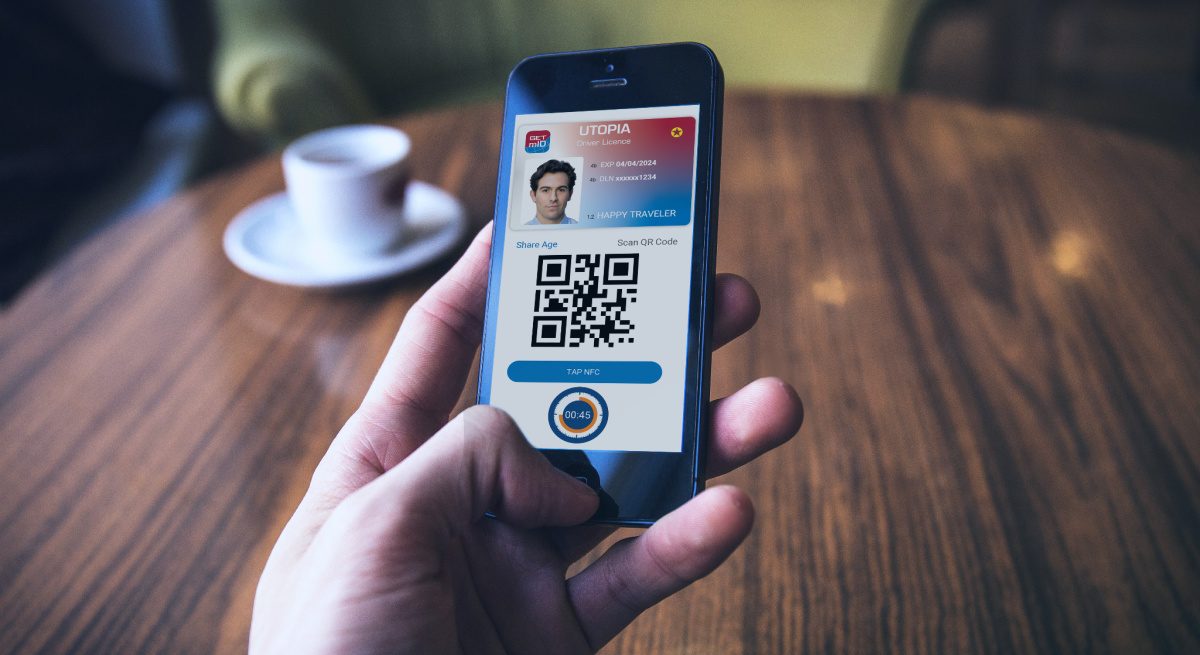Going Mobile with Contactless ID for the Post-COVID Restaurant Experience
4 Min Read By David Kelts , Max Astor
What are ways that restaurants can build business safely and reopen their doors as the future emerges — even while COVID cases continue and vaccine distribution is happening?
Restaurants that have reopened have had to navigate this socially distanced new world, juggling employee and customer safety, adhering to shifting government regulations, and maintaining the public’s confidence. As part of their pandemic strategy, many restaurateurs have invested in contactless solutions such as digital menu boards or mobile menus accessed via QR codes, to cut down on physical exchanges where germs could potentially be spread. Customers and restaurants are opting for contactless payment – tap cards, phone payments, and QR code-driven billing.
There is still the possibility for contamination when a bartender or waitstaff needs to check a patron’s ID to verify their age. To date, a thorough look at an ID requires handing over a physical credential – but now, the prospect of mobile driver’s licenses (mDL) opens the potential for accurate contactless ID checks as an important part of the overall move towards safer transactions.
Every effort is being made to ensure customers feel safe and protected. Outdoor dining during the warmer months provided a means for many restaurants to remain largely operational and in compliance with pandemic safety measures.
Restaurant employees need a morale boost and are equally as concerned about the spread of COVID as the customers that eat at their establishment. Deploying a strategy to accept mDLs will contribute to a safer “no-touch” and “contactless” working environment, reducing overall stress and giving restaurant employees greater peace of mind.
Implementing Mobile ID Technology
Florida is the first U.S. state to announce plans to make mobile driver’s licenses publicly available in 2021. Utah has started a pilot program intending on public rollout. Many other states are in various stages of mDL deployment and likely to follow suit. As ID issuers (i.e., state DMVs) begin to roll out digital options, restaurants should prepare to take advantage of the benefits of contactless ID by equipping themselves with the right technology to verify these next-gen credentials – and may even be able to pursue government grants to do so..
To start, merchants may opt to use devices such as tablets, iPod Touch, or other small Android/IOS devices with an mDL verifier app installed. Once adoption of mobile driver’s license technology has become more widespread, integration with the restaurant’s point-of-sale system will be the most efficient and legally compliant method of mDL verification. This will be similar to today’s integration of Toast, Square, Clover, etc. deployed on an on-site device.
Preventing Fraud with Contactless ID using Mobile Driver’s License (mDL)
An mDL used in contactless transactions cannot be a photo or mock-up of a license on a phone. Photos or digital renderings of a driver license are too easily manipulated and still require waitstaff to physically hold or touch the patron’s phone. This would be both less secure than checking a physical card, leading to a potential increase in fraud, and less safe from a health standpoint, as statistics show that each square inch of a cell phone may contain a whopping 25,000 germs.
Fortunately, an International Standard exists. An ISO 18013–5-compliant mDL creates the possibility of trustworthy, official, government-issued mDLs and IDs on a mobile phone. An ISO 18013-5-compliant mDL is an actual government-issued ID on the patron’s phone. The government issuer (DMV) e-signs the data and puts it under the control of the mDL holder (the citizen), to be used via electronic transfer. A restaurant employee can kick off a transaction from a safe distance with a QR scan or a quick tap of the patron’s mobile device on a payment terminal. Each then cryptographically verifies the DMV’s eSignature on the ID.
The restaurant receives only the data they need without ever touching the ID card, the patron’s mobile device, or even having to get below minimum social distance. With Bluetooth and Wi-Fi Aware, mDLs can be checked from more than 25 feet away; QR codes from six to ten feet; and Near-Field Communications, which require proximity within a few inches of a wireless reader device, can still allow for an entirely contactless exchange. All of these can work with or without internet access.
Verification efficiency and protection of the merchant from fraudulent ID documents are major benefits to implementing a more secure, contactless verification process. Automation takes the onus off the server/bartender for interpreting and visually authenticating various state drivers’ licenses. It virtually eliminates the risk of inadvertently serving an underage patron – something that can result in fines and penalties potentially including the loss of a liquor license or the closure of an establishment. Contactless ID can still fulfill all state laws and regulations.
Making Contactless a More Personal and Improved Experience
As adoption of mDL technology becomes widespread, it also opens the door for other contactless experiences in restaurants, such as virtual “check-ins,” allowing patrons to announce their arrival via Bluetooth instead of approaching a host/hostess. Not only could this help promote increased social distancing, but it can also make for a more customized dining experience. Imagine arriving at a restaurant with a personalized greeting from the server and not having to fumble through your wallet to find your ID because your age was verified prior to sitting down. In a society where 63 percent of consumers value the experience more than the item purchased being at the forefront of implementing safer and more personalized practices with mobile ID can help a restaurant differentiate itself from those that are sticking with antiquated practices.
Driving mDL Adoption in Your State
Restaurateurs and restaurant associations who recognize the potential value of mobile driver’s licenses should express their interest to their state DMVs and Departments of Alcoholic Beverage Control (ABC). Encouraging their states to not only join the movement and issue mDLs, but also urging them to go with an ISO18013-5-compliant mDL technology solution will ensure interoperability from state to state and even internationally. By adhering to this standard, merchants will be able to cryptographically verify IDs issued anywhere. Without ISO compliance, mDL holders could not use their mobile credential outside of their own state. Today’s physical license is internationally recognized due to compliance with this same ISO standard. In addition, restaurateurs can contact their POS provider to integrate the SDK/API for mDL verification into installed systems.


